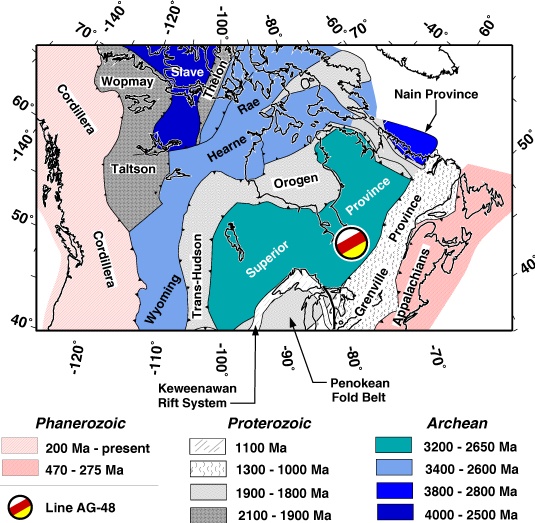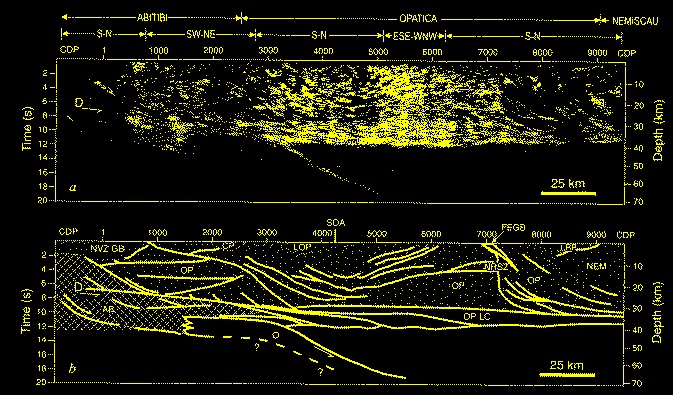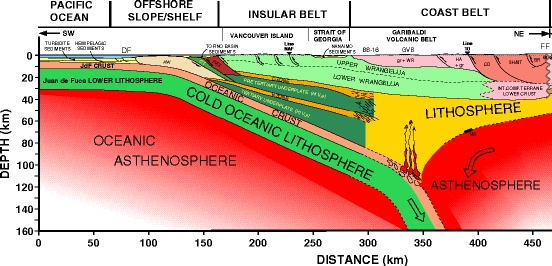The LITHOPROBE Abitibi-Grenville
Transect is located in southern Ontario and Quebec. Seismic
reflection line AG48 lies in the Archean Superior Province
that forms part of the central core of the North American continent.
This ancient cratonic lithosphere formed between 3,100,000,000
and 2,650,000,000 years ago.

Figure 1: Location of line AG48 relative to the general tectonic
elements of North America. The continent is comprised of Archean
age cratons (green-blue) sutured together by collisions between
plates during the Proterozoic (b/w patterns). More recent collisions
(Phanerozoic, red patterns) have added additional lithosphere
to the continent.
The Superior Province itself was formed by the amalgamation
of a number of "subprovinces" during Archean time.
These form a sequence of belts (alternating granite-greenstone
belts and metasedimentary subprovinces) that decrease in age
from north to south. Line AG48 investigates the transition
between the Opatica plutonic belt and Abitibi greenstone belt.
Plate tectonic processes have indisputable controlled the
evolution of the lithosphere over the past 2 billion years.
However, many continental cores (cratons) were formed during
the Archean. There is considerable debate in the scientific
community concerning what tectonic processes were most important
during this early phase of the Earth's development. At that
time, higher temperatures existed in the interior of the Earth
and this may have had an significant effect on the formation
of continental crust.
However, the seismic reflection data collected along line
AG48 clearly image a reflective structure dipping beneath the
Opatica belt (see below).

Figure 2: a) Migrated line drawing of seismic reflection data
(line AG48). b) Interpretation of crustal structure. Source:
Calvert et al., Nature, 1995
The combined seismic and geologic datasets (Benn et al., 1992)
provide convincing evidence that the Abitibi/Opatica contact
represents an Archean subduction-related suture zone. Calvert
et al (1995) interpret the AG48 data as describing a continental-style
collision between the Opatica and Abitibi belts. This occurred
2693 Ma and initiated as the northern Abitibi margin underthrust
the Opatica, forming a north-dipping lower crustal decollement
that displaced the Opatica lower crust and then continued down
into the mantle. The collision resulted in the emplacement
of the Abitibi greenstone belt (2693 Ma) and later, in the
uplift of the central Opatica (2690 Ma; Benn et al., 1992;
Davis et al., 1995). The line AG48 data have contributed to
the LITHOPROBE evolutionary model of the Superior Province
development.
The subduction zone imaged by the Abitibi-Grenville Line48
data is the oldest signature of plate tectonics that has been
observed on Earth. The data provide the first evidence of plate
tectonics operating in the Archean (more than 2.5 billion years
old).

Fig 3: Cross-section of a modern subduction zone that
is currently active beneath southwest British Columbia and
the northwest
USA.
|
